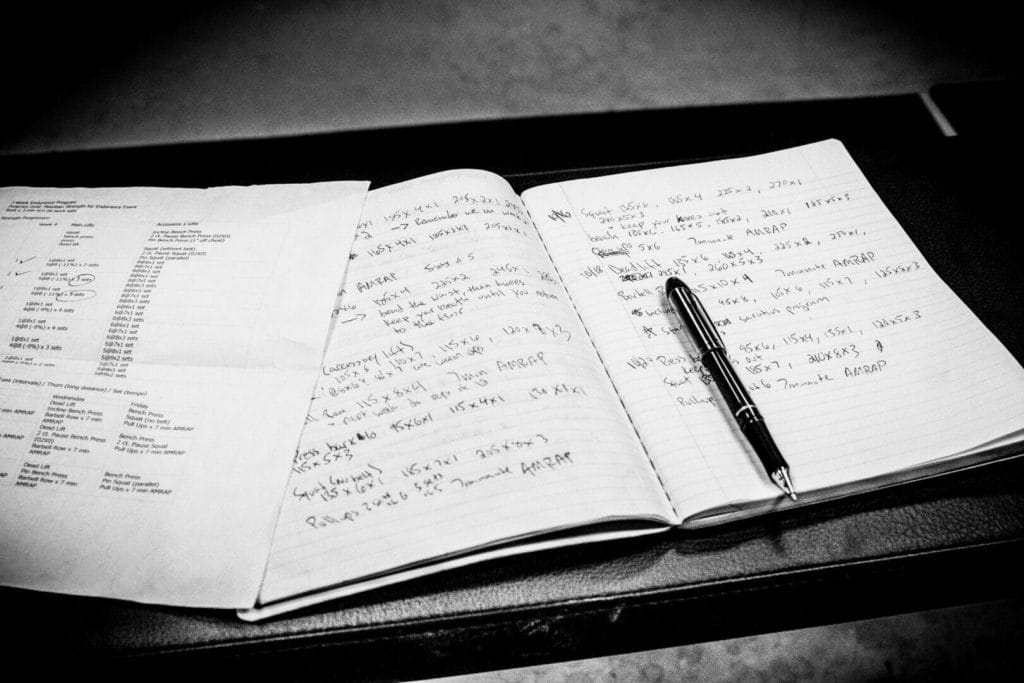Everyone is an expert. A quick social media scan will reveal an unlimited list of experts on all the topics. Exercise science and fitness seem to be no different. In just a few minutes I can learn how to get “strong” from a kid that wasn’t even alive during the Clinton administration. Its interesting that one can be strong, not having lived on the planet but a mere 18 to 20 years. Not likely long enough to have actually gone through the process of years under the bar, acquiring poundage little by little. And he certainly ain’t been around long enough to have taken others through the process. Seems odd to be an expert at a thing without ever having done it but today’s culture appreciates mouthpieces more than men of action. When did putting your head down and working become such a bad marketing move?
Goal Setting
A common homework assignment where the athlete spends just a bit of time thinking about what they want. Seems reasonable to take a few minutes jotting down what it is you’re devoting a significant amount of time and money toward, right? Probably a good idea. The coach being a bit smarter than the athlete (hopefully), will likely make goal setting an important assignment as the mere act of having thought about what you want places you far above 99% of the people walking into the gym on Monday night. As the old saying goes, if you don’t know where you’re going, any road will get you there. Ignorance is bliss I suppose but not having goals is a fantastic way to piss a bunch of time and money down the drain.
While a lack of goals is a serious problem, there is another, opposite extreme. I’m talking about professional goal setters. These folks have a list 8 pages long of all the stuff their gonna do. And their up to date on all the latest relevant “science” to get the job done. Should you foam roll? Should you stretch? Should you do high volume or high intensity training? What is high intensity training? What is training? How do you train concurrently? The list goes on. Again, I ask: when did putting your head down and doing some work become a bad thing? The primary problem with professional goal setters is that they never actually get any goals accomplished.
Goal setting can be a lot like reading a business book, the time spent seems productive but when it comes down to it, nothing gets accomplished. This is usually because the reader would have been better off to stop after the first good idea in the book. Only after successful implementation, should the reader search for the second good idea. Wash, rinse, repeat. In fact, the second we have a goal, why don’t we make it a point to get to the next phase as fast as possible? The action plan. The putting your head down and doing the thing part.
Once you have a goal, try your best not to add a second goal until you’ve accomplished the first!

Simple Goals = Simple Plan
Let’s take an athlete that wants to “get stronger and lose some body fat”, reasonable things to want to do with yourself. But, we can all agree that these need to take a bit of shape if we’re going to move forward. We need to tighten up what “get stronger” and “lose some body fat” mean to the athlete. For some, stronger means squatting 495 for five and weight loss can range from 5 to 100+ pounds. In our example, our athlete wants to:
- Squat 315 x 5
- Lose 20 lbs
These are taking shape but a better coach might ask “why”? For some, squatting IS the end goal but my experience has been that squatting is more likely to represent part of “what it takes” to get the goal accomplished. The “why” is relevant because it’s gonna (likely) be a while before the athlete gets what he wants. At various points along the way, it will be important for the coach and the athlete to have this “why” to lean on. The process won’t always be exciting.
Once we have or goals and our why, we need to assign specific habits for each goal. This is our action plan, our “goal-getting” if you will.
Goal Getting (the action plan)
- Squat 3 x per week (3 sets of 5 reps)
- Eat 3 meals per day (each containing 2 palm-sized proteins, 2 fist size veggies, and 2 fruits).
- Walk 60 min daily (add a weight vest if possible)
There is nothing remarkable about the list above, and that’s the point. This plan is very doable by most folks. Nothing needs to be added.

Anyone that’s ever accomplished anything will inform you that it takes some time. At this point, our athlete should be instructed to put his head down and get to work. Forget about the goals, forget the numbers and just focus on the actions. The process needs to be as detailed as the goal.
Execution is an uncommon action and will lead to uncommon results.
Good luck with your training!
James

